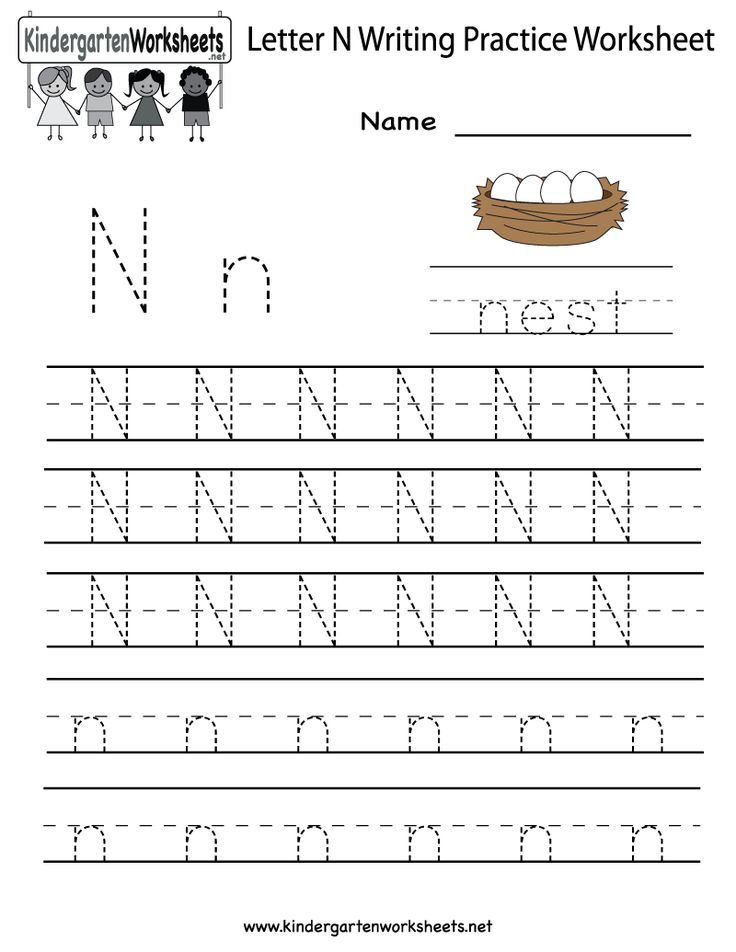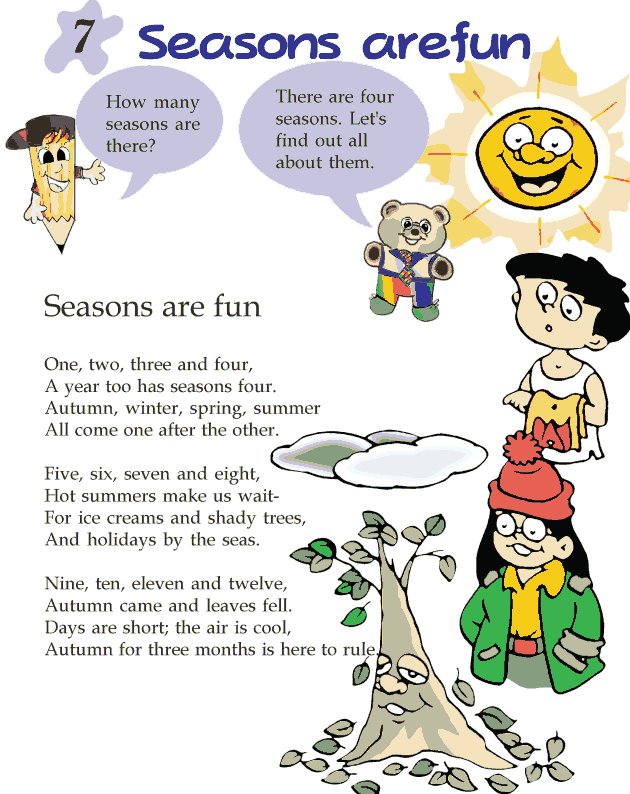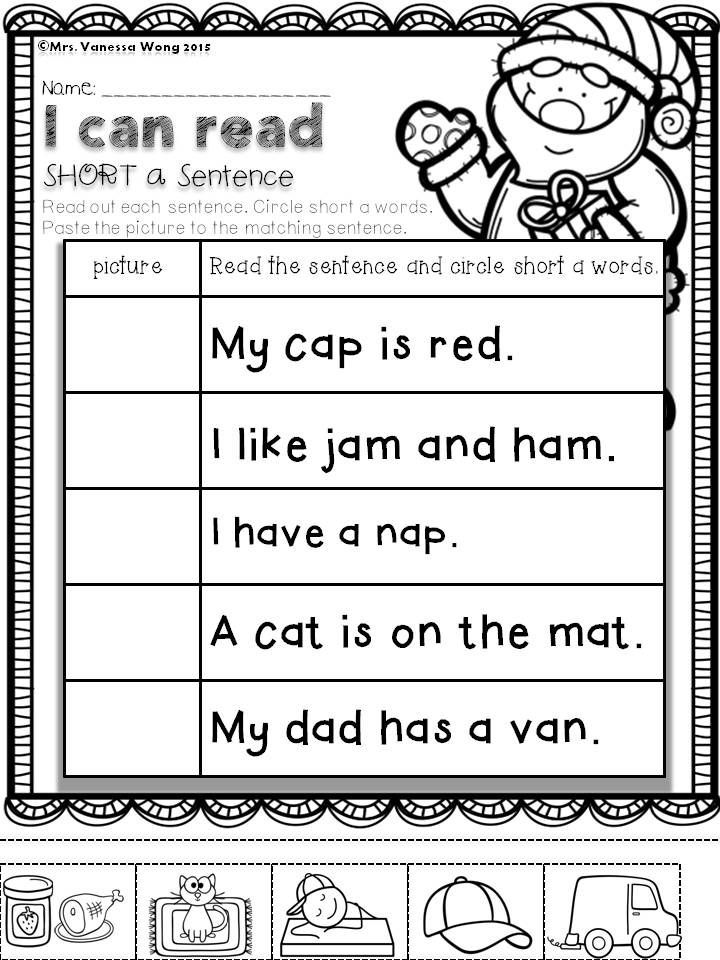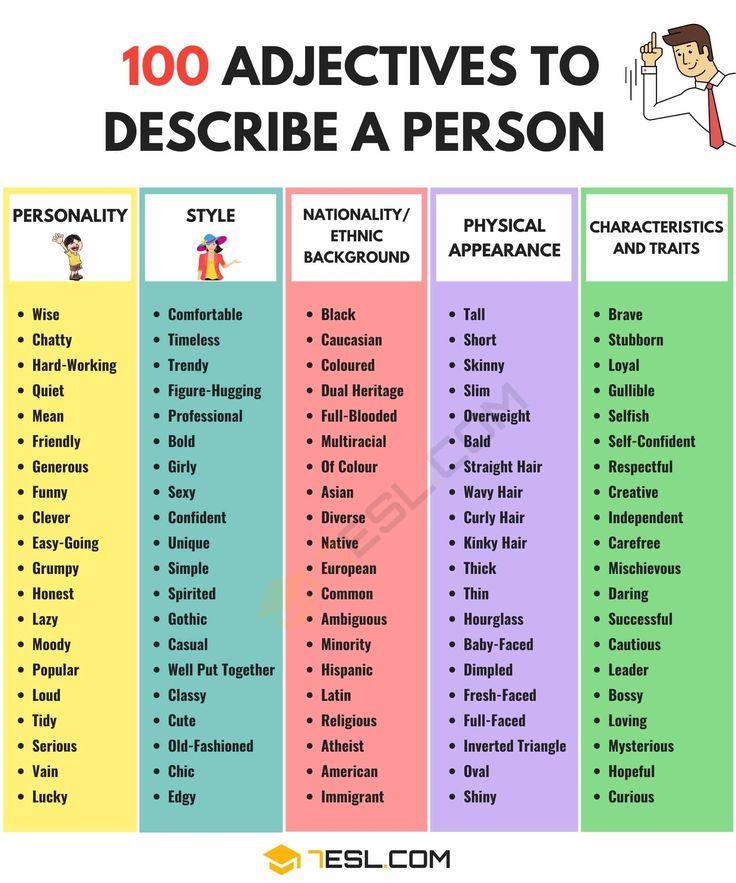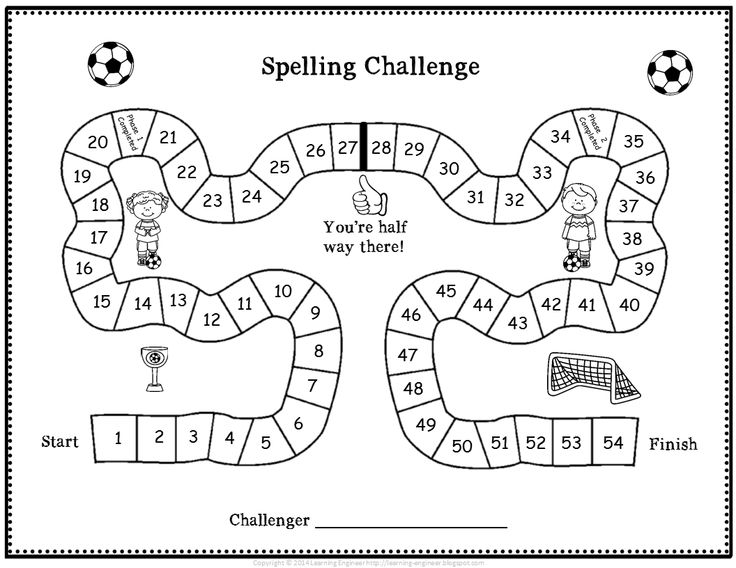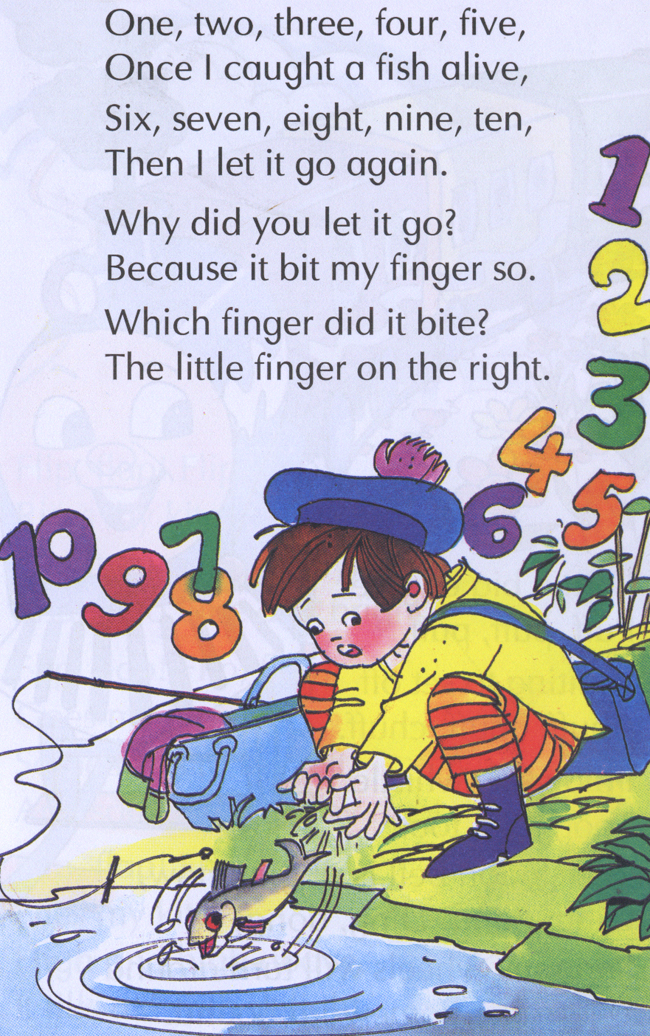Toddlers writing practice
Preschool Pre-Writing Activities For 2 And 3 Year Olds
3-5 years old fine motor activities pre-writing activities toddlers
Get lots of pre-writing ideas to prepare your 2 or 3 year old for writing letters and learn how to get started with handwriting practice WITHOUT alphabet tracing worksheets.
Alphabet Letter Tracing and Writing Before Kindergarten
Kindergarten readiness checklists can put a lot of pressure on parents to get their toddler or preschooler to go from scribbling to writing his or her first name before kindergarten.
For handwriting practice to be meaningful, your child should understand that letters represent speech sounds and be physically able to form letters using the tripod grip and memory of the letter pathway.
It isn’t until around 4 years old that children typically have the hand strength and coordination to hold a pencil using the tripod grip.
That’s why there’s no rush to encourage 2 and 3 year old children to practice handwriting, despite kindergarten readiness checklists that say your child should be able to trace letters on worksheets and even write some letters without tracing.
My approach is all about offering the right activity at the right time to meet your child where he or she is at developmentally.
I recommend gently guiding your child towards early literacy milestones through lots of indirect preparation of the hand and mind.
That way your child will progress from scribbling to writing letters and words when he or she is ready.
Pre-Writing Activities To Offer Toddlers And Preschoolers While Waiting For The Tripod Grip To Develop
1. Offer opportunities to learn that letters represent speech sounds.Your toddler or preschooler does not need to trace letter worksheets in order to start learning the alphabet.
The alphabet is a very abstract concept for a 2 or 3 year old child to understand.
Letters are symbols that only have meaning because we’ve all agreed that a certain letter (or letter combination) represents a certain speech sound. For example, the letter t represents the sound /t/, which is pronounced like “tuh” but without the “uh” on the end.
Tracing letter worksheets, or even wooden alphabet boards, won't have any meaning until a child has started developing phonemic awareness.
Phonemic awareness activities don't involve any letter symbols and instead focus on helping your preschooler hear the individual sounds (phonemes) in spoken words.
To get started, it's fun to play a beginning sounds activity using pictures or language objects as props. It's like "I SPY" except you focus on the beginning sound of a word: "I see something that starts with the sound /d/."
Once your child can identify at least the beginning sound of spoken words, then it’s the right time to show your child what that sound looks like using Montessori sandpaper letters.
Tracing each lowercase tactile letter and saying its sound during sound-letter matching activities will help your child develop muscular, visual and auditory memory of the alphabet letters. It's a fun way to learn the pathway of each letter before the hand is ready to hold a pencil with the tripod grip!
The reason I prefer Montessori sandpaper letters versus other wooden alphabet tracing boards is because each letter is on its own individual board and the letters are large enough to allow tracing with the pointer and index fingers. Tracing with these two fingers will help to develop the proper grip for holding a pencil.
I also recommend that you only introduce lowercase letter symbols at this time.
If you start with uppercase letters, your child won’t be set up for success with reading or writing because written words are made up of mostly lowercase letters. You can always do lowercase-uppercase matching activities later on to help your child learn uppercase letters for reading and writing.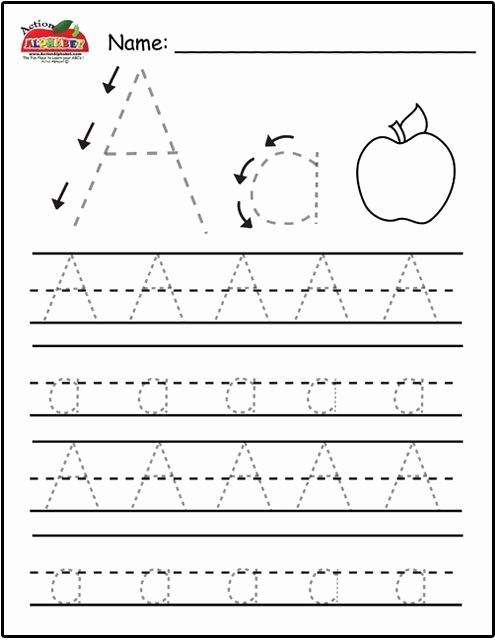
Scribbling progresses through stages and it indirectly prepares your child for writing. It’s a very valuable activity for your child’s cognitive development!
As adults we may not pay much attention to the scribbling and dismiss it as unimportant until it looks like something we can recognize.
A young toddler (around 15 months to 2½ years) will scribble randomly. Young toddlers will hold a crayon or marker with a fisted grip.
As your child approaches 3 years old, you’ll start to see the scribbling is more controlled and might feature some lines and geometric shapes.
When your child begins to talk while scribbling, you’ll know he or she has progressed to the next stage. You’ll notice that your child now names things he or she is “drawing” even if you cannot recognize the objects.
Between 3 and 5 years, your child will transition from scribbling to symbolic representation. You’ll be able to recognize that your child is drawing objects and people, and there’s usually a story to go along with each drawing.
Even if your child’s drawing is predominately scribbles, you’ll know he or she has progressed to the next stage if you see recognizable objects such as a face or a sun. Your child might also draw squiggly lines to represent writing.
Encourage your 2 or 3 year old child to scribble! It’s ok if your child is “only” scribbling right now. It just indicates that’s where your child is at developmentally.
You’ll want to keep scribbling materials on a low shelf so that they are accessible. This way your child can scribble whenever he or she wants to. The activity set up can be as simple as a few sheets of paper in a tray with 3-5 crayons.
A young toddler will be happy with just one crayon! You can keep it interesting by swapping out the scribbling tool. Whether that’s crayons, chalk, or chalk pastels, make sure that they are short enough to make it hard for your 2 or 3 year old child to hold them with a fisted grip. Broken crayons or “rock crayons” are great!
Markers don't require much pressure to make a mark on paper.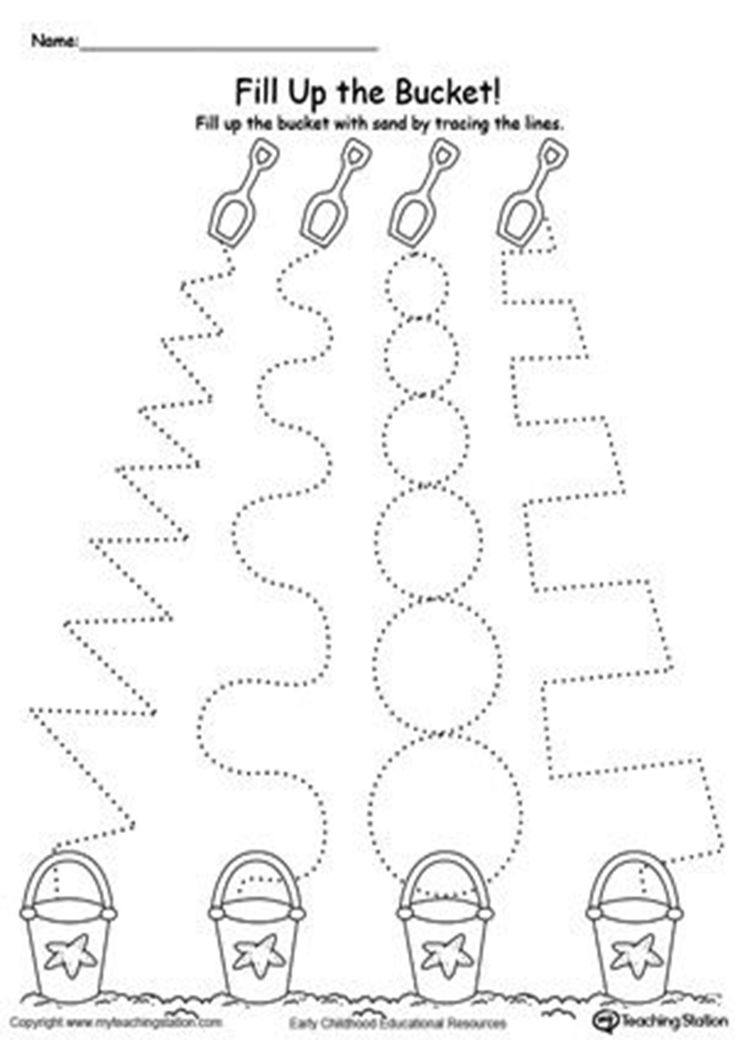 That's why it's a good idea to avoid them if you want to help your child strengthen the hand and arm muscles for later handwriting activities.
That's why it's a good idea to avoid them if you want to help your child strengthen the hand and arm muscles for later handwriting activities.
You’ll probably notice that as your child’s scribbles transition into drawings, the way he or she holds a pencil will also go through stages.
If your child hasn’t yet developed the tripod grip and you offer long pencils, then you’ll notice your child will hold it in an awkward way.
That’s why I recommend holding off on introducing regular-size pencils until your child’s hand is strong enough to hold them properly. You can look up charts online to see where your child is at in terms of developing the pencil grip.
3. Offer practical life activities to develop fine motor skills and concentration to prepare the hand and mind for writing letters.To be able to hold a pencil and write letters, your child needs to have strong hand muscles, hand-eye coordination and the ability to concentrate.
Sometimes parents get so focused on the academic skills like writing letters that they dismiss the value of practical life activities for preparing the hand for writing and building concentration.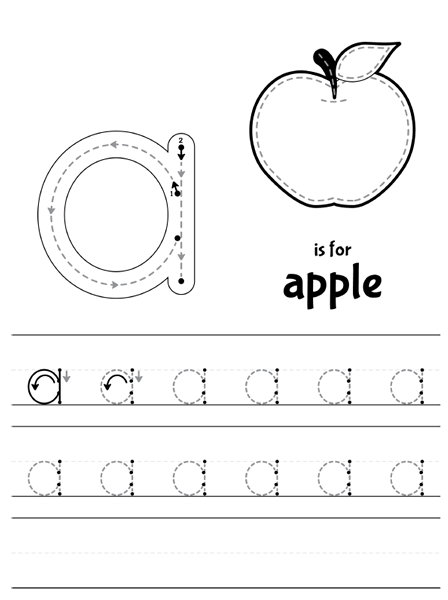
Each time your 2 or 3 year old child puts on his or her own socks or shoes, or zips up his or her coat, helps to prepare food or cleans up a spill, your child is getting ready for writing letters!
While you’re waiting for your preschooler to be able to hold a pencil with the tripod grip, you can offer lots of fine motor activities to build those hand muscles.
Here are some ideas to get you started.
- Peel a hard-boiled egg
- Pick grapes off the vine and put them into a bowl
- Shell peas
- Put fruit on skewers to make fruit kabobs
- Zip and unzip a variety of zippers in a basket
- Fasten and unfasten nuts and bolts
- Open and close mini bottles or carabiner clips
- Use a screwdriver or wrench
- Squeeze and eyedropper
- Poke holes in paper with an oversize push pin
- Put batteries in a flashlight
- Unlock a lock with a key
- Stretch elastic bands on a geo board to make shapes or a design
- Thread beads onto a string
- Secure small stacks of card stock with paper clips or brads
- Make/undo a knot with a rope
- Basic lacing or sewing
- Sculpt with artist clay or play dough
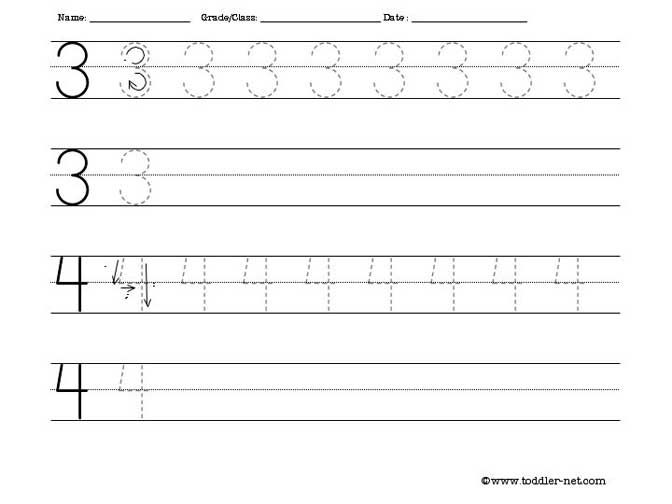 Model handwriting and the tripod grip.
Model handwriting and the tripod grip.Instead of pushing your toddler or preschooler to trace letters before the hand and mind is ready for this kind of activity, model handwriting in front of your child.
That way your child will absorb these ideas to get ready for writing:
- letters represent speech sounds
- written words represent spoken words
- written words are made up of sounds in a row
- we write from left to right
An easy way to model handwriting is to write your child’s name on any scribbling or other artwork that he or she creates.
You can also get into the habit of making a grocery shopping list with your child. You can ask your child for ideas of what to buy at the grocery story and then write them down using lowercase letters.
Another idea is to invite your child to tell you a story about a picture, and you write it down.
It’s important to model the correct tripod grip when you're writing in front of your child!
Notice how you hold the pencil.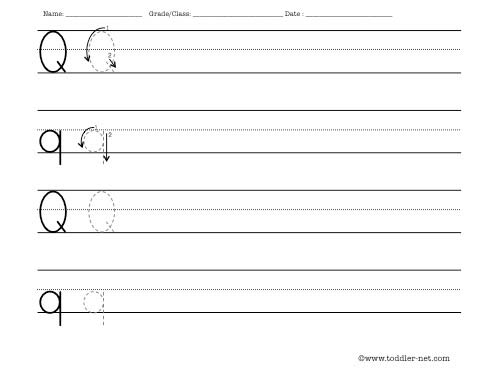 You might have to consciously change how you hold the pencil to model how to hold it properly!
You might have to consciously change how you hold the pencil to model how to hold it properly!
The Next Step Towards Handwriting After These Pre-Writing Activities For 2 and 3 Year Olds
If you start phonemic awareness activities around 3 years old, and do sound-letter matching activities next using Montessori sandpaper letters, then your child will likely be around 4 years old.
It’s around this time when you’ll notice that your 4 year old child has developed the tripod grip and is suddenly interested in trying to write letters. This is the right time to introduce writing letters!
There's no sense trying to push alphabet tracing worksheets at a younger age. That's just a waste of time and energy! Plus there's the risk that your toddler or preschooler will get in the habit of forming letters using an awkward grip on the pencil.
To practice writing letters once the tripod grip has developed naturally, I recommend using a chalkboard instead of letter tracing worksheets.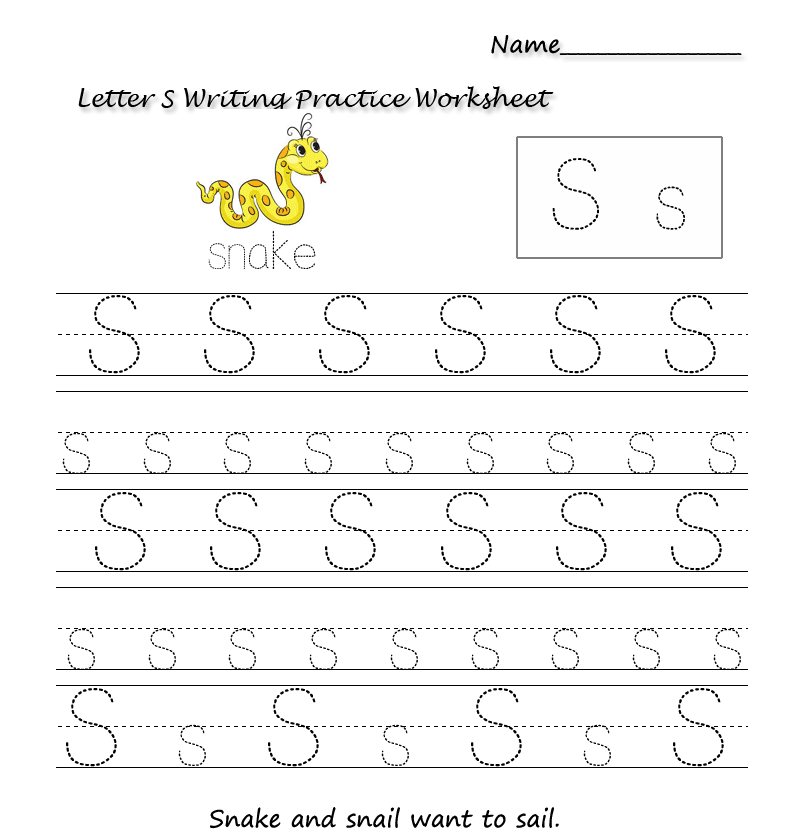
Most 4 year old children won’t have the fine motor skills to write small letters like you’ll find on most letter tracing worksheets.
With a chalkboard, your child can write letters as large as he or she needs. That way your child will use whole arm movements which will help build muscle memory of the pathway of each letter.
It’s also a bonus that early attempts to write a letter can be quickly and easily erased on a chalkboard. It’s an easy way to avoid feeling discouraged during the early stages of learning to write letters, especially if your child is a bit of a perfectionist and gets frustrated easily.
Quick Summary: Pre-Writing Activities for Toddlers and Preschoolers
There's no rush to get your 2 or 3 year old child to start writing letters before the hand and mind is ready.
It's better to educate yourself about the learning sequence and what to expect at each stage. Then you can observe where your child is at, offer the right activities at the right time and trust the process.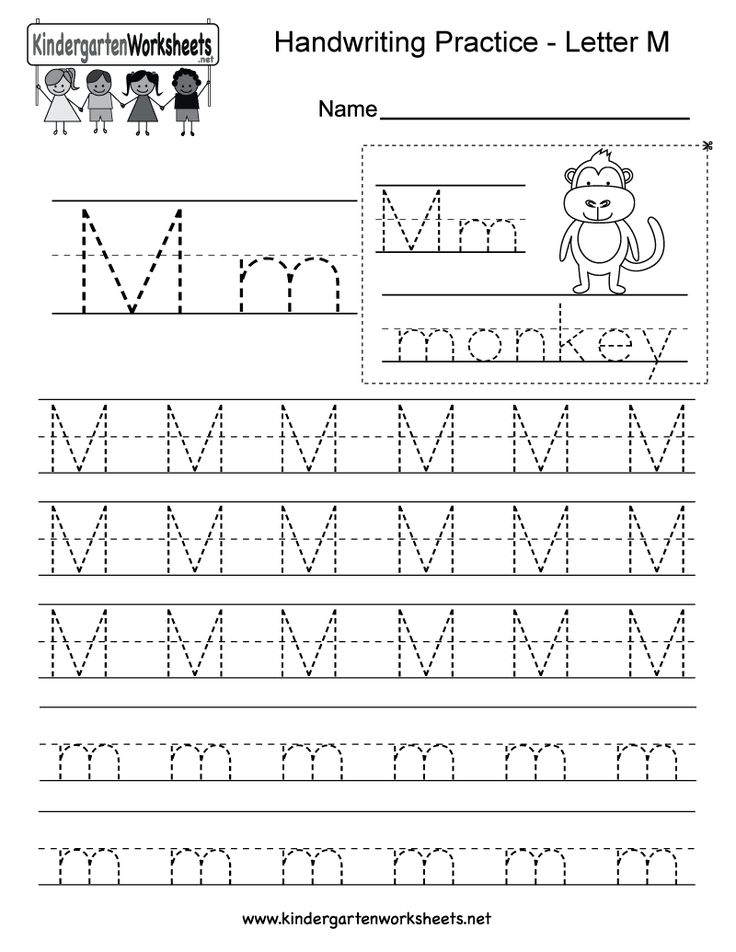
While you wait for the tripod grip to develop naturally, you can focus on several pre-writing activities.
- Play beginning sound games so your child is ready to learn that letters represent speech sounds, and then use Montessori sandpaper letters to show what the beginning sound of a spoken word looks like. Tracing the sandpaper letters with two fingers will help your child learn the pathway of each letter without having to hold a pencil.
- Offer opportunities for scribbling using short pieces of crayons and chalk.
- Offer lots of practical life activities to strengthen the hand and develop concentration.
- Write in front of your child using the tripod grip to model handwriting.
Let's stop worrying about Kindergarten readiness checklists and focus on indirect preparation!
How to Help 3 & 4 Year Olds Learning Handwriting
“How do you teach 3 & 4 year olds to print letters and numbers?”
You don’t.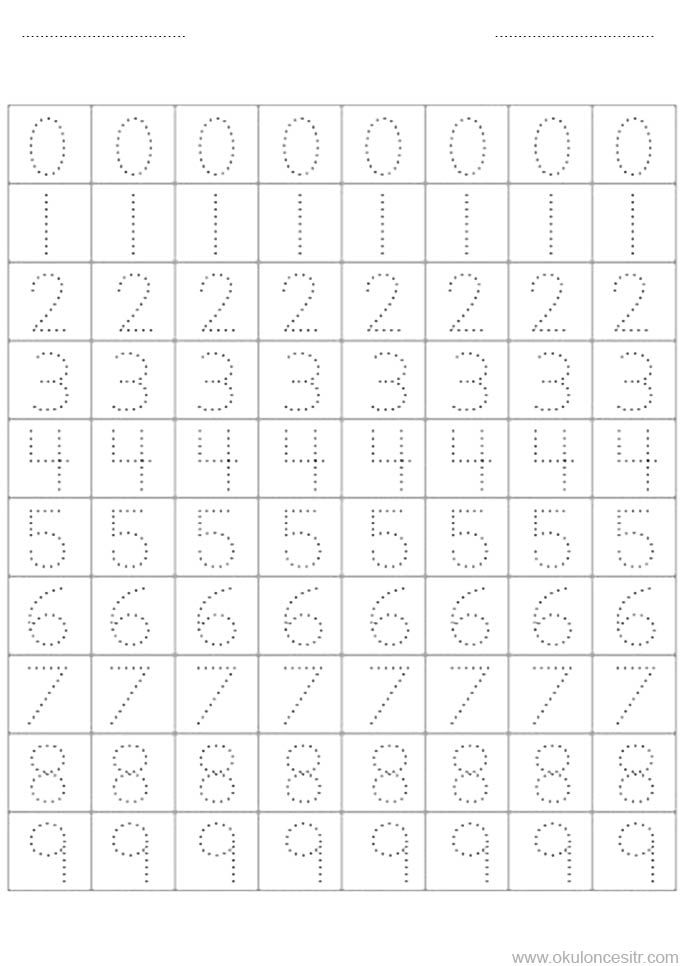
Sorry for the click bait headline but it’s the truth: you don’t need to be working on handwriting (or printing) with 3 and 4 year olds.
It’s not the right time for that.
Although three and four year olds are (typically) not developmentally ready for handwriting skills, a myth has formed that handwriting and letter formation is, in fact, a preschool skill. This myth is in large part due to a shift in academic standards asking children to learn/do more earlier in life (Almon & Miller, 2011).
There’s also an expectation that children will enter kindergarten with skills that are not developmentally appropriate (Faguano, 2019). Handwriting and printing letters is one such skill.
This post is a collaboration between me (Susie from Busy Toddler, BA in Elementary Education) and Laura of The OT Butterfly, pediatric Occupational Therapist.
I love a good topic sentence to here’s the goals of this post:
- Acknowledge the current myths around handwriting as a preschool activity
- Give you more context around just how complicated this skills is
- Provide ideas for what you can do at home to help your child form PRE-writing skills
Let’s talk child development and handwriting
Handwriting is a visual motor skill that develops over time.
Handwriting requires a whole host of foundational skills for a child to be successful and ready to (literally) put pen to paper.
Here are some of the foundational skills that go into handwriting:- Core strength to hold their body upright
- Postural stability to support fine motor precision
- Strong pincer grasp (to pick up the pencil)
- Arm and hand strength (can they manipulate an object one-handed?)
- Ability to cross the midline (crossing their arm from one side of their body to pick up something on the other side)
- Concentration skills for focus
- Visual memory skills (to remember, copy, and translate how a letter looks)
- Visual motor skills for their eyes and hands to communicate
- AND MANY MORE THAN EVEN THIS
All that to say: there is a lot more that goes into handwriting than might be immediately considered.
We can’t ask a child’s body to develop faster just to get them to write earlier.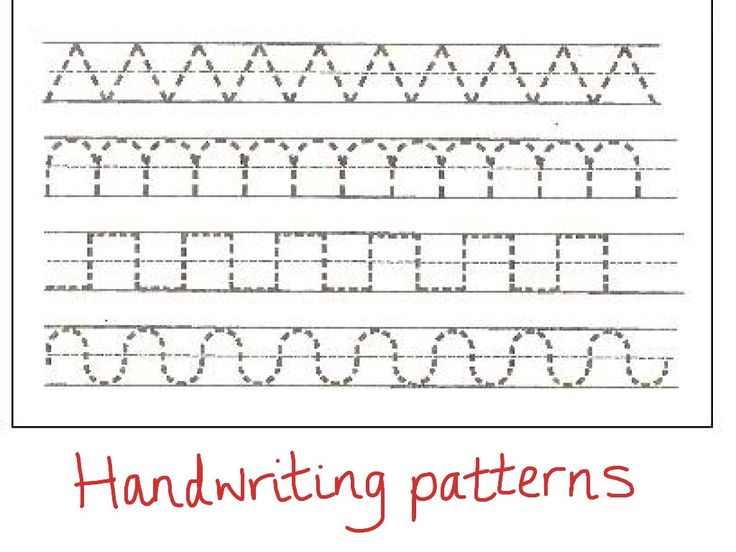
Similar to many, many other skills in childhood, developing visual motor skills follows a predictable sequence.
- Visually recognize shapes and letters (we can’t expect them to draw what they don’t “know”)
- Tracing shapes and letters (this gets skipped a lot – tracing is a HUGE step)
- Imitating a shape or letter (using step by step guidance for each stroke)
- Copying shapes and letters
- Independently drawing a shape or writing a letter.
These five steps, this sequence, is not expected to happen over night and will take many months and years. This is yet another plug for “you cannot rush into handwriting.”
Just like kids walk before they run, there are a lot of skills to build before they’re ready for learning handwritingThe truth is: rushing into handwriting before a child has truly mastered and developed all the skills needed to successfully print letters and numbers can often lead to a frustrating process and potential problems (Faguano, 2019).
Expecting children to learn a skill before they have the ability
to store and call upon prior learning, can lead to a number of problems.
No one wants handwriting to be something kids dread. We want a smooth transition into writing, if possible.
We can often give our children that by giving them the gift of time. It’s noted that children often learn better literacy skills through natural processes than through drilled activities – handwriting included (Faguano, 2019).
There’s also bone development at play here: don’t forget that pieceWhile some kids will master these foundational skills earlier than others, and may start putting pen to paper sooner, remember that is not typical of all children and is not a sign that your child is behind.
But if you have concerns about your child’s motor skill development, trust your instincts and talk to their pediatrician not people on the Internet.
It also requires that the bones in a child’s hands have developed – and again, that’s not something we can rush just because we “want” to get our child writing or because our neighbor’s child is already printing.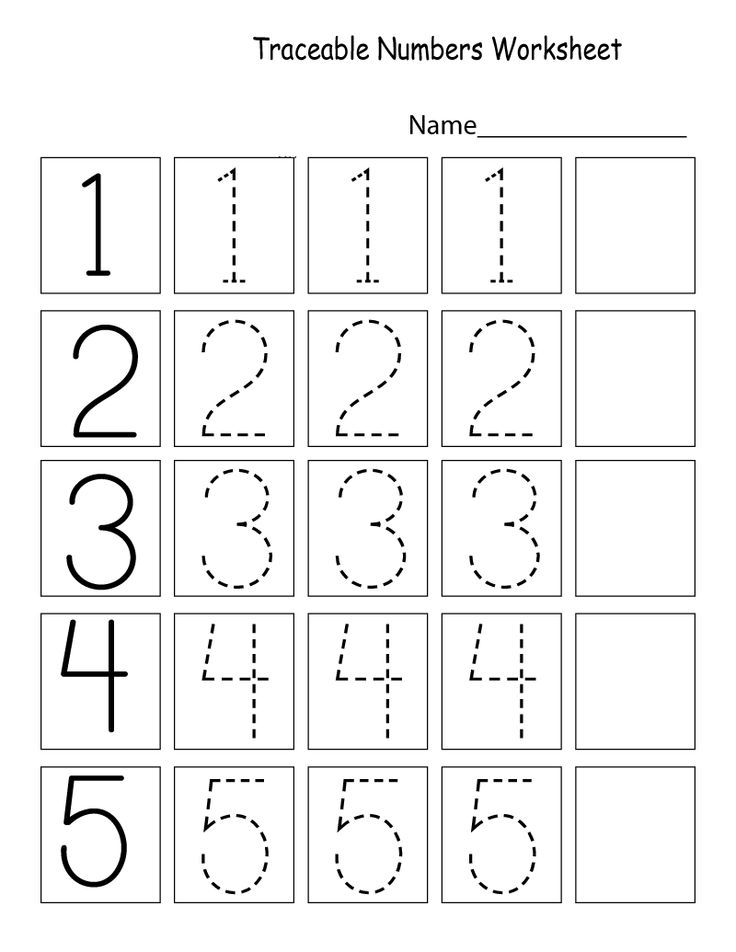
Hand bones develop throughout childhood. No amount of pressure to write earlier will make those bones grow any faster.
Activities to grow foundational skills for learning handwritingIn the preschool years, let’s shift focus from “teaching handwriting” or “working on printing letters” back to more developmentally and age appropriate pre-writing activities.
These are activities that provide children the chance to work on those foundational skills that are so important.
Now, these activities are NOT a check list. This is not “try it once and move on.” These are on-going strength building activities. Imagine only doing leg-day one time at the gym and saying “I’m good! Mastered those lifts and ready to move on.”
Continuing to do these strength and skill building activities with your child is IMPORTANT. So important that it calls for all caps.
LOOKING FOR ONE-ON-ONE SUPPORT? Schedule a consultation HERE with Laura from The OT Butterfly.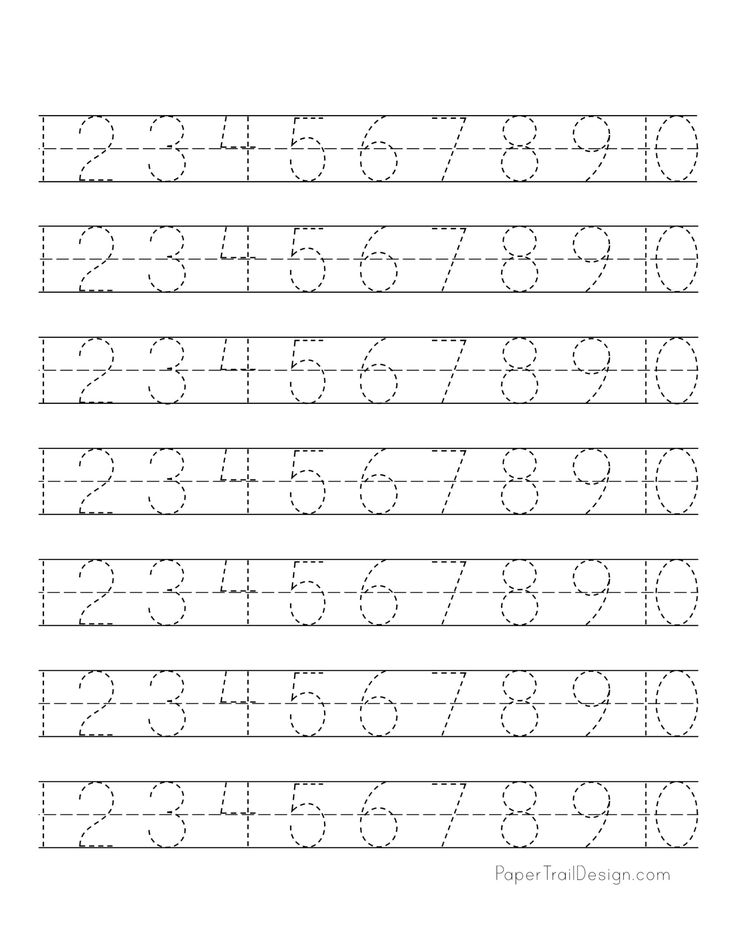
(First, let’s get a simple list of easy things in day to day life that build writing foundational skills – things you don’t need a blog link for)
- Letting kids dress themselves
- Zipping up jacks
- Play dough
- Lacing beads
- Craft projects (painting, coloring, etc)
- Playing at a playground or park
- Climbing
- Building with blocks or bricks
- Puzzles
- Digging in dirt or sand
- Feeding self and using utensils
(Click the photos for full descriptions of the activities and supply lists)
Toy Parade: Crossing the midline, fine motor movements, visual motor skills
Save the Pups: Arm and grip strength, visual motor skills, crossing the midline
Working on a Vertical Surface: Arm strength, body strength, concentration
Pouring Station: Visual motor skill, arm and grip strength, crossing the midline
Threading Station: Fine motor skills, pincer grasp, visual motor skills, hand strength
Animal Rescue: Grip strength, motor skills, concentration
Match & Glue: Grip strength, body stability, visual motor skills
Dot Sticker Line-up: Visual motor skill, fine motor skills, concentration
Baking Soda Bin: Fine motor skills (pincer), grip strength
Color Mixing Bin with Peri Bottles (yes, peri bottles): Grip strength, body stability, visual motor skills
Painting Toys: Concentration, grip and arm strength, body stability
Puzzle Unwrap: Fine motor skills, visual memory, crossing the midline
The Quick SummaryDo you need to be teaching your preschooler how to write letters? No.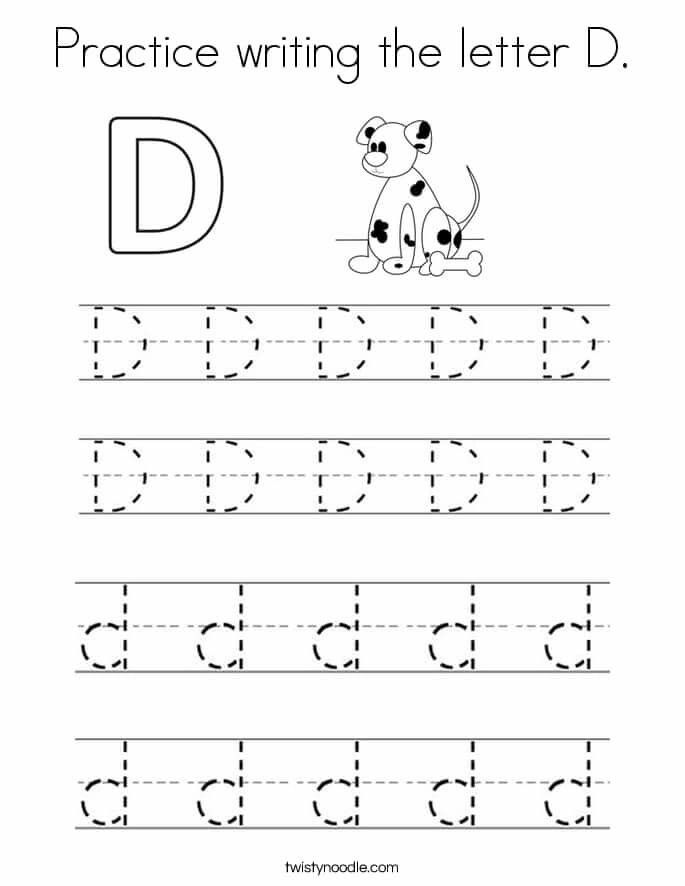
We don’t need to be pushing children into this skill earlier – and earlier is usually not developmentally appropriate and can lead to this being a very frustrating skill.
Is it possible some kids will pick up a pencil at an early age and start writing? Absolutely. Just like some kids will pick up a bike early and are like “I got this.” But also, early bike riders aren’t better bike riders as adults… and early writers aren’t better writers. They’re just early.
What can you do to help your child be ready for writing? Get those foundational skills brewing. Give them every chance to work with their hands, to build grip and arm strength, to reach, stretch, manipulate, and create. Make their whole body development the focus rather than zooming in on one skill (like printing letters).
Support their future in handwriting with opportunities to grow and develop at their own pace – no need to rush this skill. In fact, it’s a great skill to let kids really take their time on.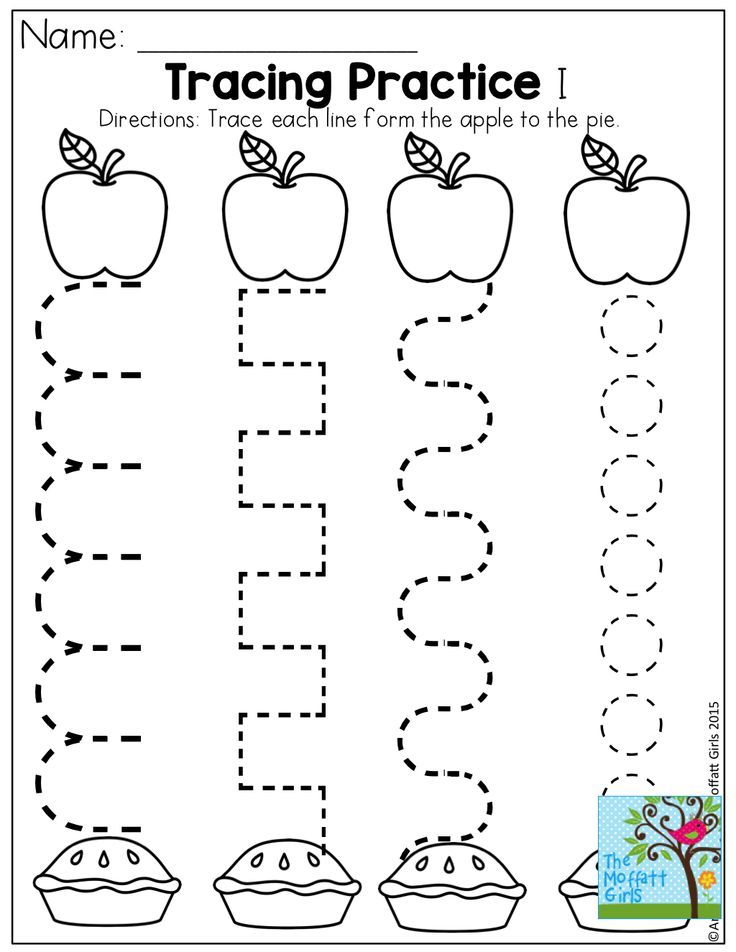
References:
Almon, J, & Miller, E. (2011). The crisis in early education: a research-based case for more play and less pressure. College Park, MD: Alliance for Childhood.
Faugno, R. S. (2019). Pediatric prewriting stroke developmental stages: Are expectations evolving beyond the child’s natural capabilities? Journal of Occupational Therapy, Schools, & Early Intervention, 13(1), 19–39. https://doi.org/10.1080/19411243.2019.1647811
Susie Allison, B.A. Elementary Education
Author and Creator
Susie Allison is the creator of Busy Toddler and has more than 1.6 million followers on Instagram. A former teacher and early childhood education advocate, Susie’s parenting book “Busy Toddler’s Guide to Actual Parenting” is available on Amazon.
0019
Written practice contributes to a deeper assimilation of vocabulary and grammar, as well as improves oral speech and reading. Writing helps to imprint the word in memory.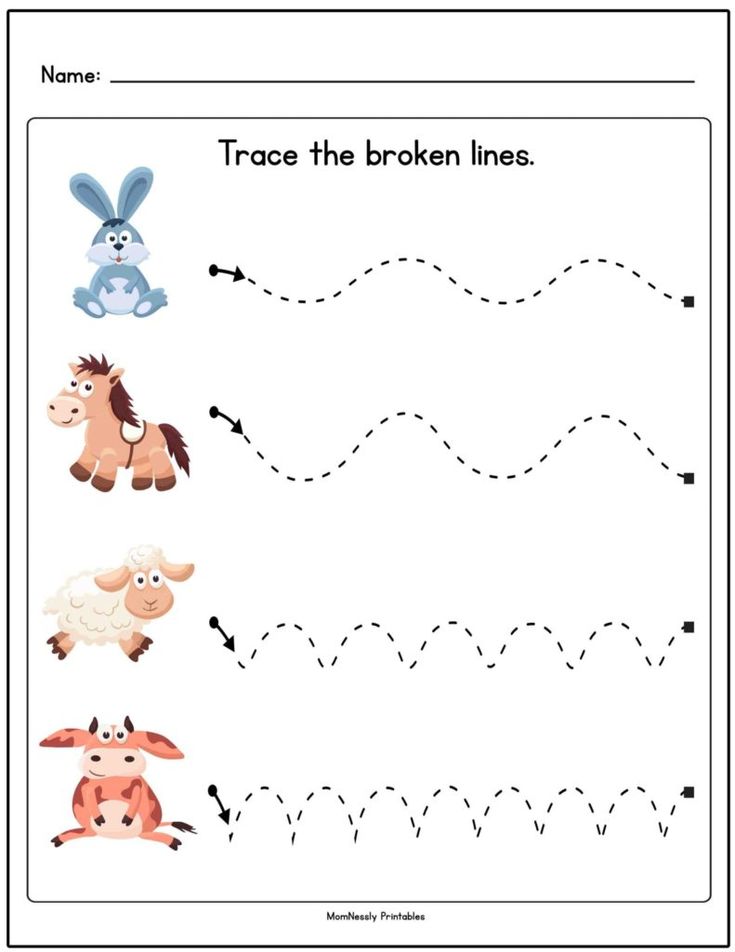 If we look at the English alphabet, we will understand that many letters are spelled the same as the letters of the Russian alphabet. For children who are familiar with the Russian alphabet, it will be a little difficult to write letters such as Rr, Gg, Nn. For example, they will confuse R with Russian Ya. And the letter N looks like the letter I, mirror errors, these are typical mistakes of Russian-speaking children. As a rule, with regular practice and practice of writing, these errors are gradually eliminated. nine0016
If we look at the English alphabet, we will understand that many letters are spelled the same as the letters of the Russian alphabet. For children who are familiar with the Russian alphabet, it will be a little difficult to write letters such as Rr, Gg, Nn. For example, they will confuse R with Russian Ya. And the letter N looks like the letter I, mirror errors, these are typical mistakes of Russian-speaking children. As a rule, with regular practice and practice of writing, these errors are gradually eliminated. nine0016
When the child writes down a letter, he or she must say the sound that the letter makes. It is important to encourage the comparisons that the child will make when working with English letters. For example, in the Jolly Phonics program, the letter S looks like a snake and makes the sound ssss ... and so on. Associations will help you remember the letters. If the child refuses to write, the letter can be postponed until the very end of the lesson, and during the practice of writing, turn on his favorite music.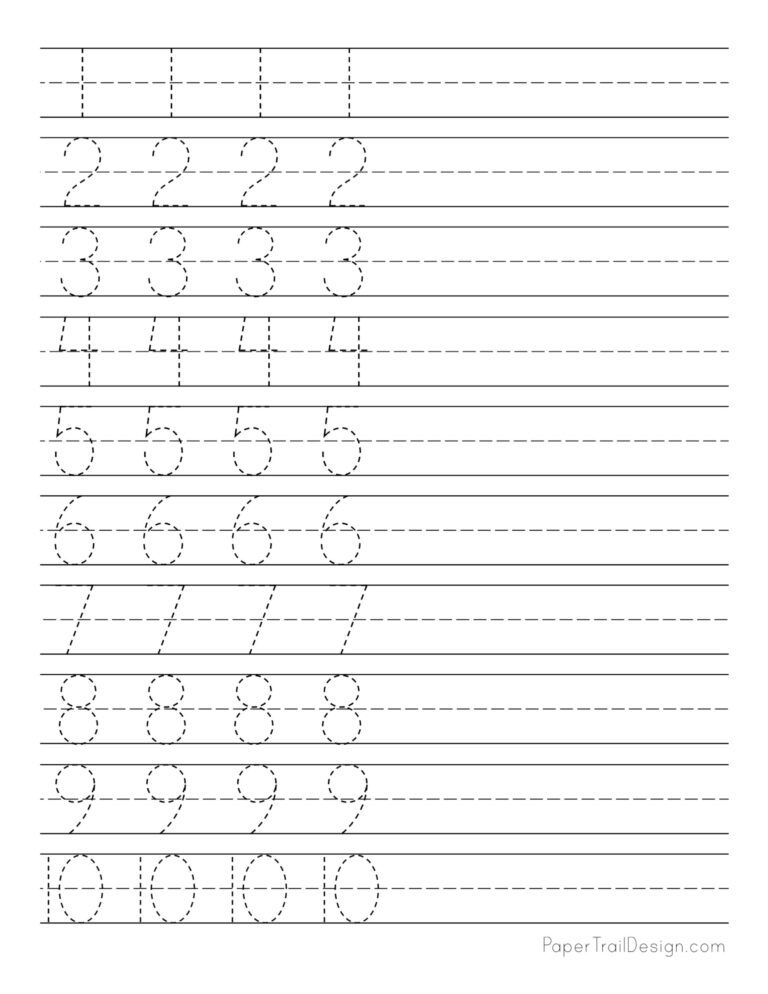 In order to motivate the child to practice writing, the workbook should contain letters and drawings made like coloring books, since coloring and looking at pictures is one of the most favorite activities for children. As you get acquainted with the letters, you can triple the letter dictations and start trying to write letters from dictation. Or give creative tasks, for example, make letters from circles, sticks and ponytails. nine0016
In order to motivate the child to practice writing, the workbook should contain letters and drawings made like coloring books, since coloring and looking at pictures is one of the most favorite activities for children. As you get acquainted with the letters, you can triple the letter dictations and start trying to write letters from dictation. Or give creative tasks, for example, make letters from circles, sticks and ponytails. nine0016
After the letters are mastered, you can proceed to the stage of writing words. At the initial stage, the words most familiar in meaning and used by the child are selected. English spelling involves memorizing the spelling of a word. Psychologists have found out that there is a connection between hand movement and memorization. That is, the words must be written down in order to remember them, line by line. The number of lines is determined independently, but not less than two. Be sure to control the process of writing words. If a child wrote down a word with a mistake, he may remember it incorrectly, subsequently, it will be more difficult to relearn.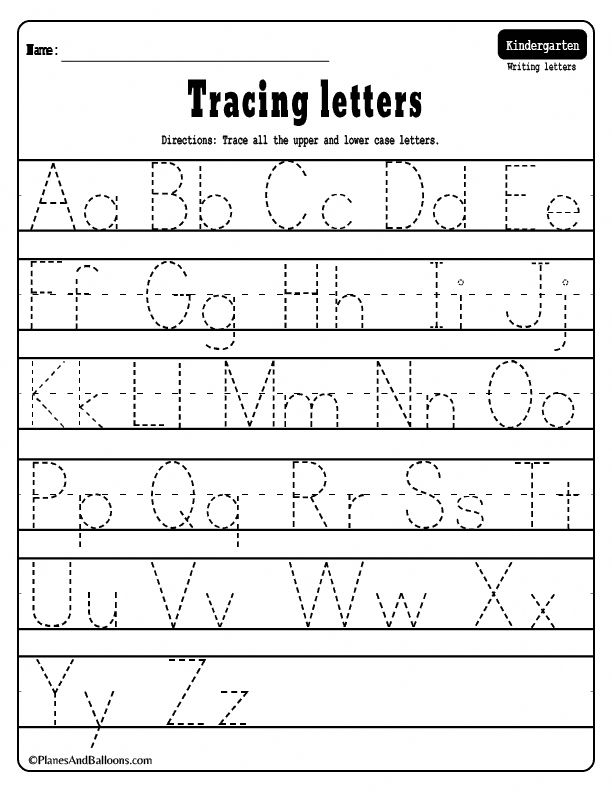 It is very effective to give the child temporary guidelines for tasks. For example, he looks at a word while you count to 15, and then writes it down from memory. nine0016
It is very effective to give the child temporary guidelines for tasks. For example, he looks at a word while you count to 15, and then writes it down from memory. nine0016
From writing words, you can gradually move on to writing sentences. Tasks for prescribing sentences should be varied and entertaining. Examples of tasks: insert the necessary words according to the meaning into the gaps, answer the questions in one word, choose a question word for the answer, sign the picture, write the correct form of the verb, the letters in the words in front of you are mixed up, help them find their place. You can find such tasks in modern international educational materials. Therefore, it is very important to choose a textbook and workbook, the work on which would be not only productive, but also interesting for the child. Writing tasks should gradually become creative and free, such as writing short essays about your favorite weather, animal, book, and so on. nine0016
When writing, visual and auditory analyzers are used to correlate the sign with pronunciation, speech-motor - in the course of pronunciation and motor - in the recording process itself.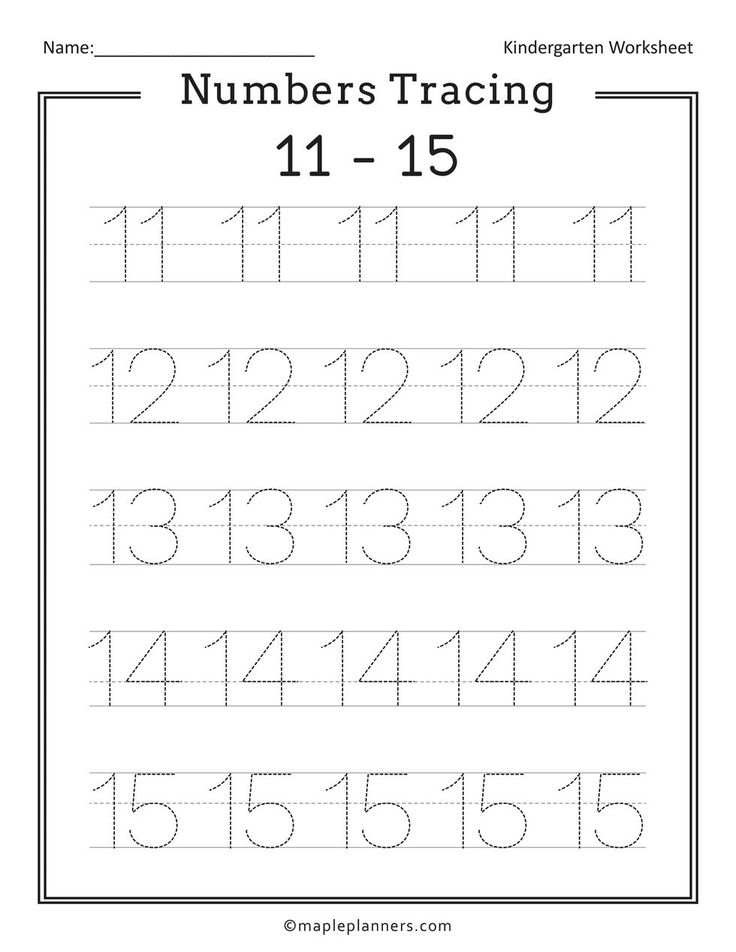 All this contributes to a good memorization of lexical and grammatical material by the child. Writing helps to imprint the word in memory. All aspects of language learning (reading, writing, speaking) are closely interconnected and are auxiliary means to each other. In order for information to be assimilated in the long term, the material must be seen, heard, read and, finally, written down. nine0016
All this contributes to a good memorization of lexical and grammatical material by the child. Writing helps to imprint the word in memory. All aspects of language learning (reading, writing, speaking) are closely interconnected and are auxiliary means to each other. In order for information to be assimilated in the long term, the material must be seen, heard, read and, finally, written down. nine0016
Share this link:
You will also like:
Who is better to learn English with: with native speakers or with Russian teachers?
English in kindergarten. Will the child cope with such a load?
English in the form of games, tasks and tests. Learn English fun
Habits in English
The best corporate English courses in Moscow
- Home
- Blog
- How to teach a child to write in English
Why write letters to Santa Claus
A large number of people perceive the New Year as an opportunity to start a new life. Many psychologists talk about this. What makes us believe in a miracle and is it worth writing letters to Santa Claus? Advice for readers of Dobro.Zhurnala was given by clinical psychologist Ekaterina Zimina.
Why do people believe in miracles? nine0012
Ekaterina Zimina - clinical psychologist
1
of
1
New Year's Eve has long turned into a ritual transition. We set the table, put on our best clothes, make toast. There is a feeling in consciousness that at this moment there is some kind of contact with a miracle that opens up possibilities.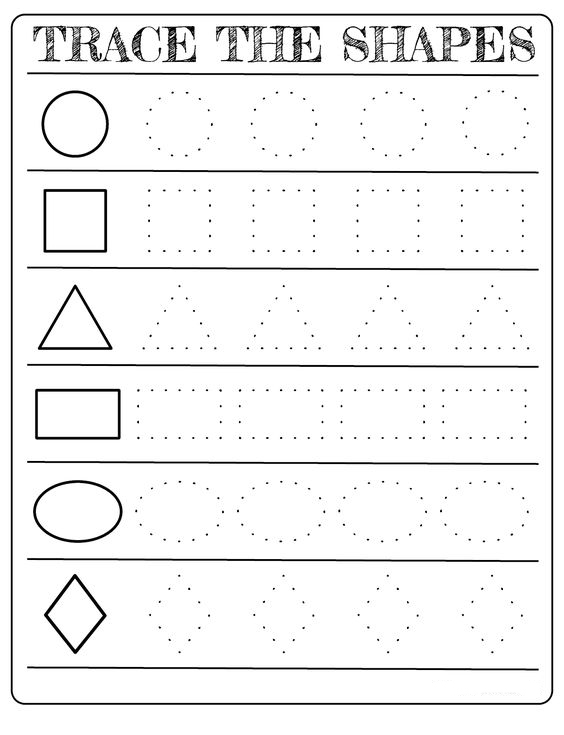
We perceive this moment as the moment of zeroing and rebirth, when there is a chance to start a new life. Hence the hope to live next year better than the previous one. But if in this process a person hopes for someone else who will be able to realize these desires, this is infantilism. Real faith in a miracle is when you yourself have done a lot and now you expect that these works will lead to the fulfillment of a dream. nine0016
Writing letters is good
1
out of
2
There is a technique in psychology when a person writes a letter: sadness, anger, pain, gratitude or wishes. And a letter for the New Year combines several of these tasks at once. This is gratitude, and wishes, and analysis of the results.
A person sums up, remembers what he did and what desires he realized, this gives rise to gratitude, which in itself carries a charge of positive emotions.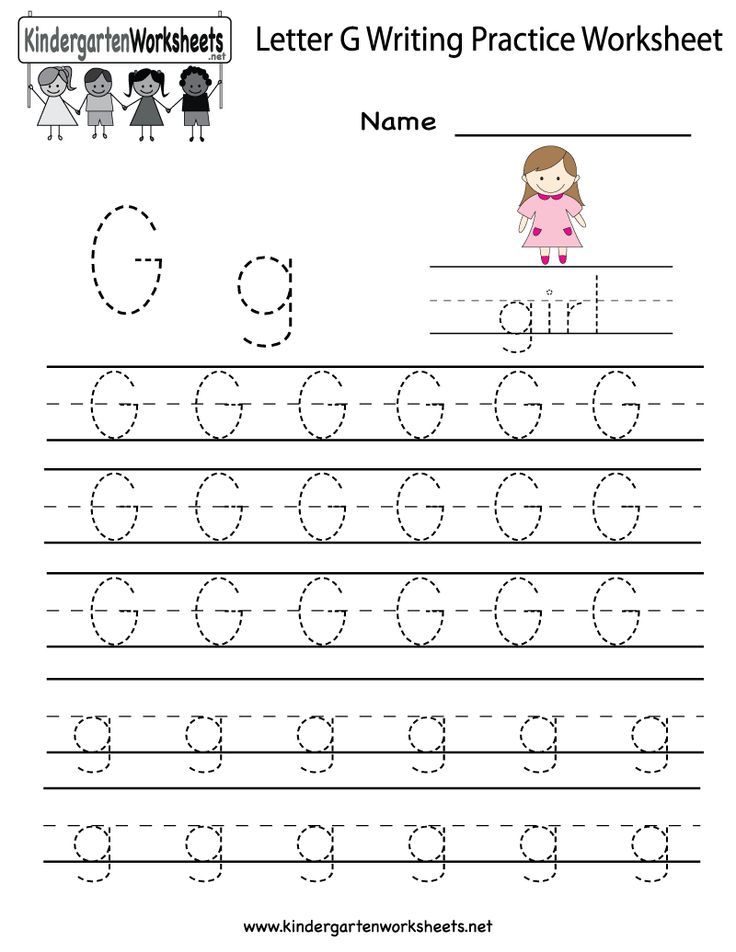 nine0016
nine0016
In addition, we introduce ourselves in the letter! We tell who we are and how we live. And at this point, you can adjust your self-esteem and increase your self-confidence.
All this is important, like a ritual to start a new life. That is why it is useful to write letters to Santa Claus not only for children, but also for adults.
How to write to Santa Claus
1
of
2
If you are writing a letter with your child, first discuss what he wants to tell the New Year wizard. Then explain to him the rules for writing such messages. After all, it is a certain culture. When we see a person, we say hello, so the letter begins with a greeting. nine0006 Then you need to introduce yourself and write a short story about yourself. This develops in the child an awareness of his own self (Who am I? What do I like to do? Why am I doing this?).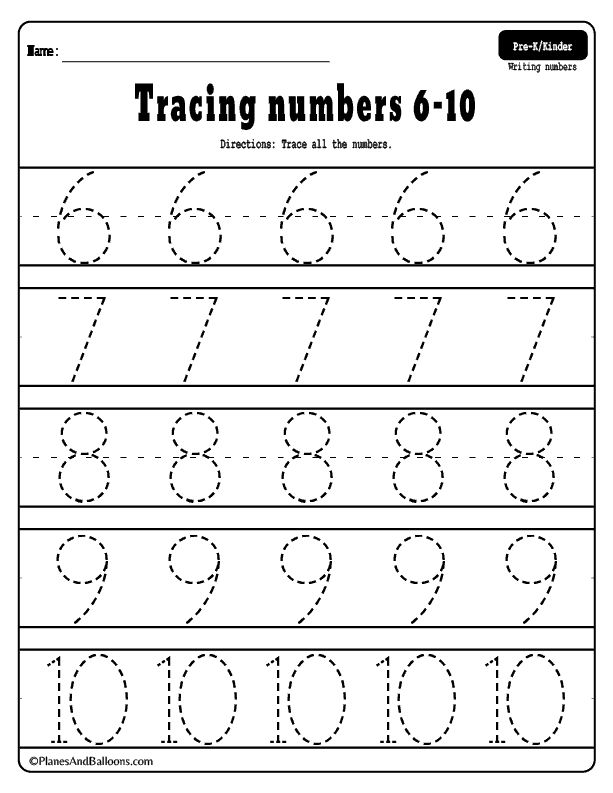 In this way, we teach the child to analyze and accept himself and his actions. In the message, it is important to write about your achievements and failures, because Grandfather Frost is a "wizard" and "sees everything." In fact, this practice teaches us to accept ourselves and not to criticize, because we are whole.
In this way, we teach the child to analyze and accept himself and his actions. In the message, it is important to write about your achievements and failures, because Grandfather Frost is a "wizard" and "sees everything." In fact, this practice teaches us to accept ourselves and not to criticize, because we are whole.
It is good to present such complex but important things in a playful way. So a child from childhood learns to see himself with all the shortcomings and mistakes and adequately look at the world. nine0016
After that, the letter can thank you for the previous gifts. After all, it is gratitude that develops and fills a person.
And then you can start wishing what you want. But it is also important to write why.
What to do with impossible wishes
1
of
1
what is possible and what is not.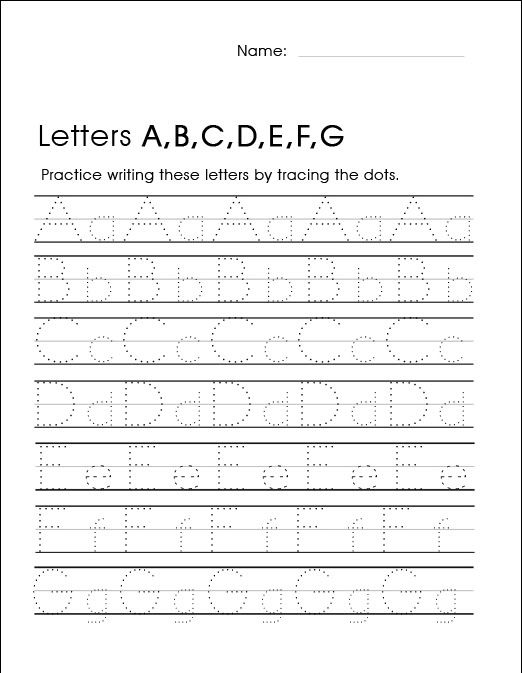 And somewhere to hint that there are things that you need to do yourself. After all, they will give experience that can be appropriated as an achievement. The same “peace in the whole world” is created by our actions. nine0016
And somewhere to hint that there are things that you need to do yourself. After all, they will give experience that can be appropriated as an achievement. The same “peace in the whole world” is created by our actions. nine0016
The same strategy can be followed when it comes to mega gifts.
16 June 2022
-
31DEKAR 2022
Event
online
PR company to help animals 2022
to become a volunteer
more than devalue them. On the contrary, you need to fill them with meaning and significance, which will become a value for the child. nine0016
In general, a conversation about gifts is a conversation about values and should be treated with care! What are you planting in your child, what seeds are you sowing!
Therefore, it is not necessary to deprive the baby of a gift, even if he is very guilty. The presentation should not become a means of manipulation.